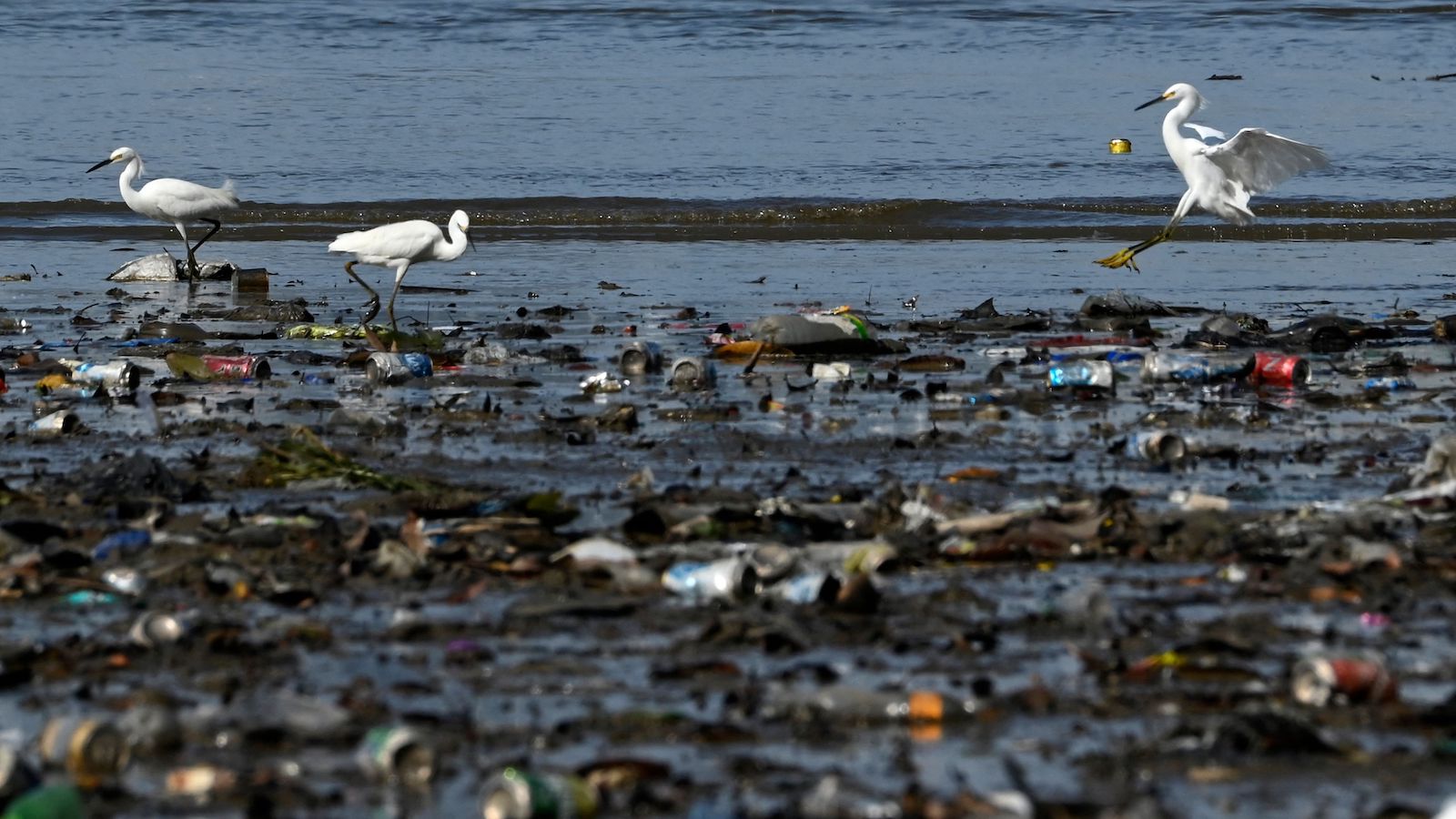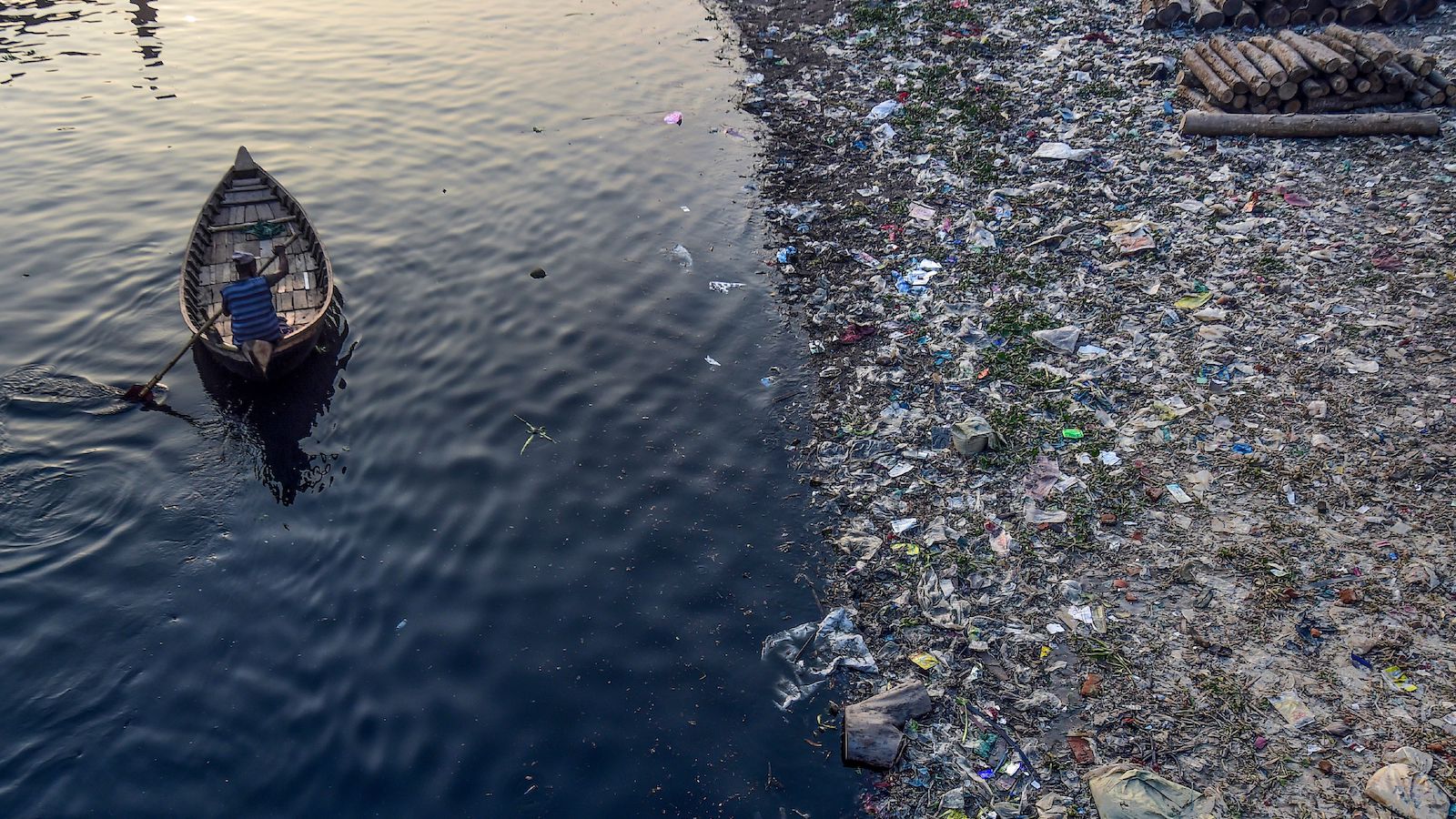Despite growing recognition that the world is making more plastic than it can handle, the petrochemical industry has kept churning out plastic products — to the detriment of the planet and the climate.
A report released on Tuesday by the Organization for Economic Cooperation and Development, or OECD, offers a granular look at plastics’ life cycle, describing a system that dumps millions of tons of plastic waste into the environment every year. In 2019, before the COVID-19 pandemic began, the report found that only 9 percent of the world’s 353 million tons of plastic waste was recycled into new products. The rest was either burned, put in landfills, or “mismanaged” — dumped in uncontrolled sites, burned in open pits, or leaked into the environment.
The authors of the OECD’s first report on the world’s plastics called for countries to take urgent action to rein in the problem, including by scaling back demand for single-use plastics. “[T]he current linear model of mass plastics production, consumption, and disposal is unsustainable,” the report says.
The analysis comes just days ahead of a high-stakes United Nations summit, where world leaders are expected to begin drafting a global treaty on plastic pollution. The talks are backed by many of the world’s leading plastic producers, and advocates are hopeful that they will yield a binding agreement to address plastic’s full life cycle and restrain its production. Such an agreement would represent a major departure from the post-productions efforts — ocean cleanup initiatives, for example — that have for decades defined most plastic management strategies.
Part of the reason these approaches haven’t worked is because they are ill-equipped to keep up with the sheer amount of plastic the world produces. According to the OECD report, global plastic production has skyrocketed in the past two decades, outpacing economic growth by nearly 40 percent. By 2019, plastic production had doubled since 2000 and reached an eye-watering 460 million metric tons — about the same weight as 45,500 Eiffel Towers. This growth appears to be unstoppable; not even the Great Recession nor the COVID-19 pandemic managed to curb plastics use for long. In 2020, when the coronavirus first began shuttering economies and disrupting global supply chains, the use of plastic dipped a mere 2.2 percent below 2019 levels. The OECD says it is now “likely to rebound once again.”
Some of the top companies contributing to the planet’s glut of plastic are better known as oil and gas producers: ExxonMobil, Sinopec, Saudi Aramco. Anticipating a global shift to cleaner forms of energy, these firms have invested big in plastics that can be sold — and discarded — abroad.

These companies’ plans could inundate poorer parts of the world with plastic. They could also help raise global temperatures. In 2019, the report concluded, plastics generated 3.4 percent of the planet’s greenhouse gas emissions — mostly due to carbon-intensive processes needed to manufacture plastic from fossil fuels. This finding echoes previous work from the U.S.-based advocacy group Beyond Plastics, which, in a study published last October, called plastic “the new coal.” That study used federal data to suggest that the American plastics industry is on track to overtake coal in its contribution to climate change by 2030.
Beyond Plastics and other environmental advocates have long contended that this monumental scale of production is almost certainly unnecessary. According to the OECD’s analysis, 40 percent of the world’s plastic production in 2019 went toward packaging with an average useful lifetime of less than six months. Then, even if that plastic makes it into a controlled landfill — what many activists say is the least bad way to dispose of plastic waste — it can take hundreds of years to degrade. Other disposal methods like incineration emit toxic chemicals into the atmosphere. And so-called “leakage,” the release of plastics into waterways and ecosystems, can strangle wildlife and poison the food chain.
What can be done? The OECD recommended four key areas for intervention, including bolstering markets for recycled products and investing in “innovation” to extend the lifetimes of plastic goods. The organization also stressed the need for domestic policies to “restrain demand” for plastics, saying that “current bans and taxes are insufficient.” The organization recommended a suite of ideas that could make it more expensive for companies to churn out plastics: Fees could force companies to assume the costs of waste management and collection; governments could take away fossil fuel subsidies.
In response to Grist’s request for comment, Joshua Baca, vice president of plastics for the trade group the American Chemistry Council, said that plastic companies already supported many of the OECD’s recommendations, including recycled content standards and “improving access to waste collection.”
Carroll Muffett, president and CEO of the advocacy group Center for International Environmental Law, said that many of the OECD’s recommendations were well-intentioned, but wished the report had placed a greater emphasis on limiting plastic production. Characterizing plastic pollution as a mismanaged waste problem, he said, can distract decision-makers from policies designed to create less waste in the first place.
This is the point that hundreds of advocacy groups and scientists have been making in the lead-up to this month’s U.N. Environment Assembly meeting in Nairobi, Kenya. In December, more than 700 civil society groups, workers and trade unions, Indigenous peoples, women’s and youth groups, and others urged U.N. member states to craft a legally binding agreement that includes strategies to wind down global plastic production. Roughly 90 companies and more than 2 million individuals have made similar appeals.
“If you only focus on the demand side of the equation without addressing the expansion of that production capacity,” Muffett said, “then you are always chasing the problem and never catching it.”




